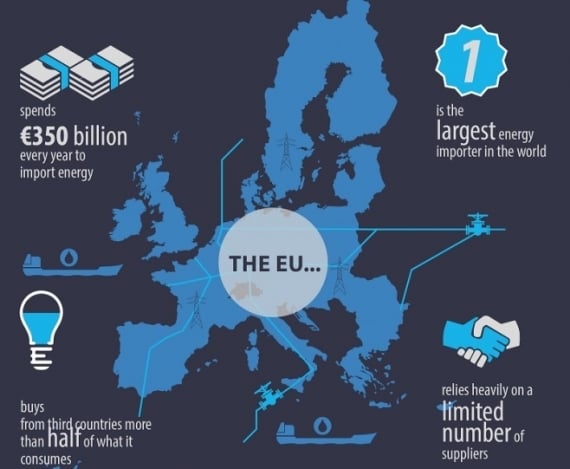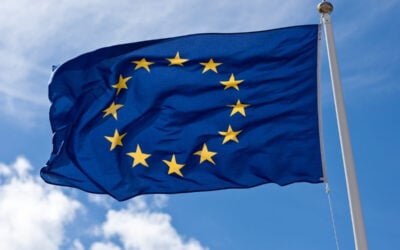
The European Council (EC) has agreed a new position on the internal electricity market, placing consumer empowerment, cross-border trading and higher levels of renewables at the heart of the European Union’s efforts to transition to a low carbon economy.
Yesterday the EC reached a general approach on three key areas of the internal market that will be put forward to the European Parliament at the beginning of 2018 – creation of a modern electricity market; establishment of a more competitive and consumer-oriented internal electricity market; and promotion of renewable energy use.
‘The cornerstone of the redesign of the electricity market’
The council’s agreed negotiating position on establishing the framework for an internal electricity market across the EU sets out how it intends to ensure a ‘well-functioning, competitive and undistorted electricity market’ with the aim of enhancing flexibility, decarbonisation and innovation.
Try Premium for just $1
- Full premium access for the first month at only $1
- Converts to an annual rate after 30 days unless cancelled
- Cancel anytime during the trial period
Premium Benefits
- Expert industry analysis and interviews
- Digital access to PV Tech Power journal
- Exclusive event discounts
Or get the full Premium subscription right away
Or continue reading this article for free
This is intended to help the EU transition toward a low carbon system and economy and meet the Energy Union’s objectives such as the 2030 climate and energy framework.
New rules will be introduced to allow for electricity trading within differing timeframes, with an aim to bring trading closer to real-time. This is intended to allow a higher share of renewable production in the EU’s energy systems, while new rules on dispatching and balancing responsibility will limit the distortions on the market.
Electricity trading areas known as ‘bidding zones’ are to be more clearly defined as areas in which market participants are able to exchange energy without capacity allocation. These are intended to maximise cross-border trading and maintain security of supply across the region.
The Commission’s proposal requires maximum capacity to be allocated to the market participants on the border of a bidding zone. A benchmark level of maximum capacity is established on the border and must be respected, with countries below that level required to start implementing remedial actions or reconfigure the bidding zones. The Commission would be given the opportunity to intervene if the benchmark has not been met by a pre-disclosed deadline.
Europe’s capacity mechanisms will also see changes proposed, with new installations after 2025 only eligible if their emissions are below 550g CO2/kWh or below 700 kg CO2 on average per year per installed kW. There will also be a limit for participation for existing power plants which cannot receive payments after 2030 and the payments need to decrease after 2025.
Promoting renewable energy use
To further aid the growth of clean energy in Europe, the EU has committed to a target of at least 27% of overall energy consumption to be from renewable sources by 2030, up from the 20% set for 2020.
The council resisted calls for a high target of 35% which had been called for by a range of MEPs who claimed the lower goal lacked ambition and would not achieve enough to address the demands of the Paris climate change agreement.
However, the union stuck to the target agreed in 2014 with new legislation to address bioenergy, sustainability and electricity.
In the transport sector, the renewables target for 2030 is set at 14% for each member state, with a sub-target of 3% for ‘advanced biofuels’ which will allowed to be ‘double-counted’ towards an overall target. Electromobility is to be ‘strongly encouraged’ by two multipliers of 5x for renewable electricity used in road transport, and of 2x for rail transport.
The heating and cooling target has been set considerably lower, with member states needing achieve just a 1% increase in the share of renewable energy each year.
In a further change for member states, each will have the possibility of opening up their national support schemes across borders to generators of renewable energy in other member states and will be prevented from making an unjustified retroactive changes to these schemes.
A particular focus of the council’s efforts is to facilitate an increase in the use of renewables by consumers, who will have access to simplified notification procedures for small-scale installations along with the rights and obligations of ‘renewable self-consumers’.
Kadri Simson, minister for economic affairs and infrastructure of the Republic of Estonia, which currently holds the presidency of the Council of the EU, said: “This decision has a direct and positive impact on all Europeans. Using more renewable energy will help our cities, industries and houses become cleaner, healthier and more sustainable.
“The directive will also make it easier for consumers to take the initiative and become producers themselves. Through a combination of action by governments, companies and consumers, we will be able to maintain our global leadership in renewables.”
‘Competitive, consumer-centred, flexible and non-discriminatory’
Another directive places EU consumers at the heart of the future internal market, giving them more rights and options as market participants while ensuring electricity pricing remains dynamic across the continent.
Kadri Simson, minister for economic affairs and infrastructure of the Republic of Estonia, which currently holds the presidency of the Council of the EU, said: “Customers are our main priority in this legislation. Our aim is a competitive market that will ensure affordable electricity for all, but we will also give governments the option to help in cases of need.
“On the other hand, consumers will have the means to be active and engaged and make informed decisions. This ensures that the electricity market really delivers for the European people.”
In the future electricity market electricity suppliers will be able to set prices freely, with the intention that this will limit distortions, boost competition and lead to lower retail prices. To provide a layer of protection and avoid the politically charged prices seen in the UK, member states will be able to regulate prices temporarily to assist and protect energy poor or vulnerable household consumers.
In order to engage customers more in the market, member states will ensure that electricity suppliers are encouraged to offer dynamic electricity price contracts as well as smart meters. A framework describing the role, functioning and treatment of the energy communities has also been established to make sure that they contribute to the overall cost sharing of the system.
Unlike the approach being taken by regulator Ofgem in the UK, both distribution system operators (DSOs) and transmission system operators (TSOs) will be allowed to own, develop, manage or operate energy storage facilities under certain conditions.
The European Parliament is expected to agree on its negotiating mandate for these measures in the beginning of next year, with the council ready to start negotiations immediately after.





